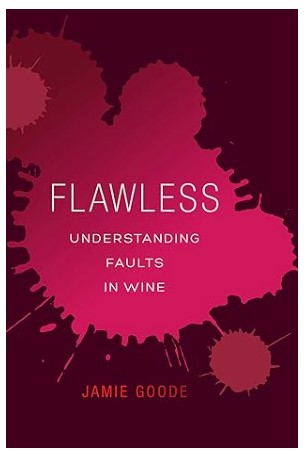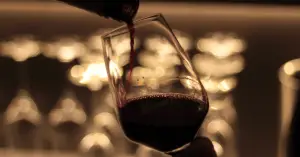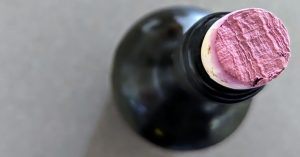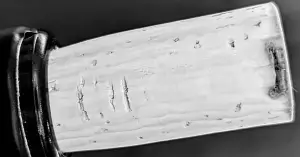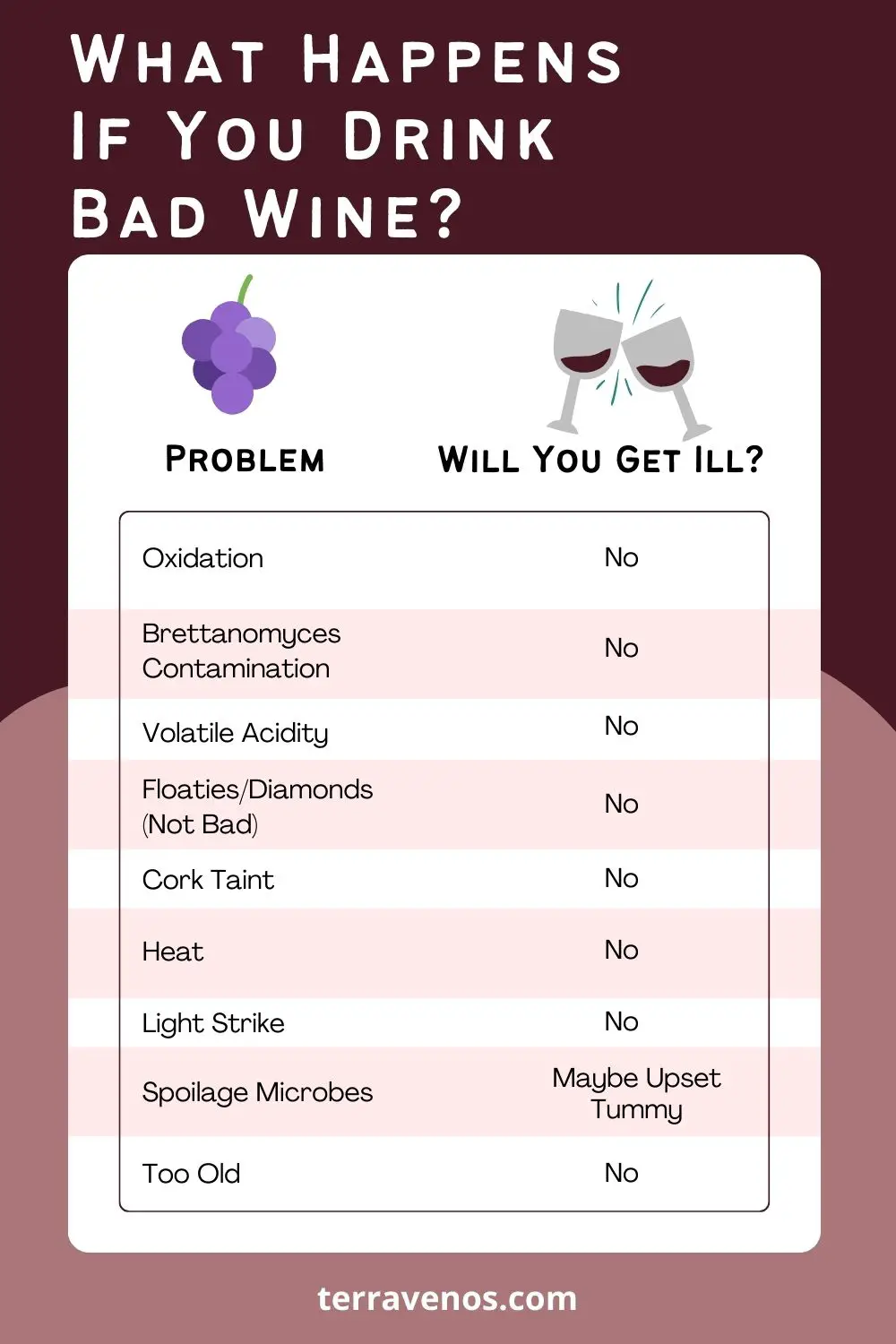
Here’s a list of all of the common things that can cause wine to go bad, along with what will happen if you drink a bad wine that has these faults and flaws.
- Drinking Bad Wine: Will I Still Get Drunk? Yes!
- Drinking Bad Wine: Oxidation
- Drinking Bad Wine with Brettanomyces Contamination
- Drinking Bad Wine with Volatile Acidity
- Bad Wine with Floaties or Wine Diamonds
- Bad Wine from Cork Taint (TCA)
- Bad Wine from Heat Damage
- Bad Wine from Lightstrike
- Bad Wine from Microbial Spoilage
- Bad Wine Smells Like Egg or Garlic
- Bad Wine That’s Too Old
- Getting into Wine Faults and Flaws
- Final Thoughts: What Happens If You Drink Bad Wine? Mostly Nothing…
- Thirsty for More?
Drinking Bad Wine: Will I Still Get Drunk? Yes!
If you drink bad wine, no matter what the problem is, you’ll still get drunk. Nothing happens to the alcohol level for any of the many problems that can make a wine bad.
Drinking Bad Wine: Oxidation
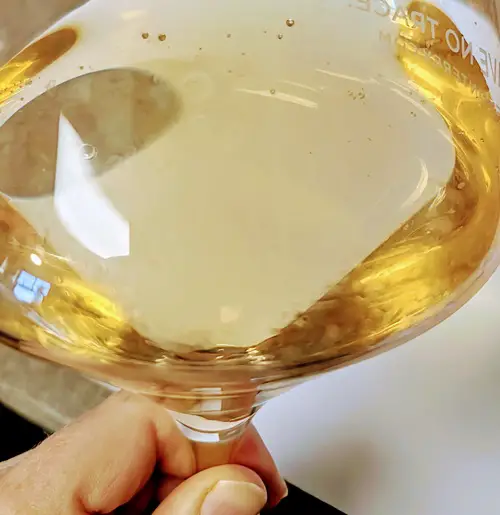
Oxidation means that the wine gets exposed to oxygen causing it to change color (from pale lemon to deep amber for white wines and from bright ruby to tawny for red wines), lose aromatics, and become dull and muted. Oxidation can come from two sources: 1) the winery and bottling line, or 2) a faulty closures. Bottling line issues are pretty common at wineries, so this can happen – even with screwcaps. Screwcaps sometimes won’t settle perfectly on the threads of the cap, letting oxygen in.
What Happens If You Drink Oxidized Wine?
Nothing bad will happen if you drink oxidized wine. You’ll get muted flavors that are nutty and bruised apple quality. You won’t get sick.
Fun Wine Fact: Some wines are deliberately oxidized in style. Go check out Amontillado Sherries for an interesting drinking experience.
Drinking Bad Wine with Brettanomyces Contamination
Brettanomyces contamination refers to the presence of the Brettanomyces yeast strain in wine, often just called “Brett”. This causes the wine to develop nasty aromas and flavors resembling barnyard, band-aid, or medicinal notes. Wines become infected with brett during the winemaking process. The winery’s hygiene practices or the choice of barrels can contribute to brett development.
What Happens If You Drink a Wine With Brettanoymces?
Nothing bad will happen to you if you drink wine with Brett. You’ll get a nasty flavor in your mouth that will be hard to get rid of and that lingers. Some wine drinkers like a small amount of brett in their wines to give it complexity, but I think that a little goes a long way.
Unhelpful Tip: Brettanomyces will smell like barnyard funk or bandaid. You can’t look at a wine affected by Brettanomyces and tell that it’s been affected.
Drinking Bad Wine with Volatile Acidity
Volatile Acidity (VA) is a winemaking flaw that describes the presence of excessive volatile acids, primarily acetic acid (vinegar). Wines develop VA either during the fermentation process or due to poor winemaking practices. Additionally, flawed closures that fail to maintain a proper seal can contribute to VA.
What Happens If You Drink a Bad Wine with Volatile Acidity?
Nothing bad will happen to you if you drink a wine with high levels of VA. You won’t get sick and you’ll still get buzzed. Just like brett issues, some wine lovers enjoy a little VA in their wines. People are weird in their personal tastes. That’s cool.
Bad Wine with Floaties or Wine Diamonds
If you see something that looks like tiny crystals or shards of glass or floaties in your wine, the wine isn’t bad and it’s safe to drink. These wine diamonds are natural and happen when the wine gets chilled and tartrate crystals fall out of solution. Tartrate crystals come from the grapes and are 100% natural and safe to drink. Your wine may have these floaties in them if it wasn’t properly stabilized before bottling.
Helpful Tip: Wine diamonds are more obvious in white and rose wines than red wines. Red wines are too dark to see them floating around. Here’s what you need to know about wine tartrates.
What Happens If You Drink a Bad Wine with Floaties or Wine Diamonds?
Nothing bad will happen if you drink a wine with little crystal floaties in it. It’s unlikely you’ll taste them and it doesn’t affect the wine’s flavor. If they bother you (personal choice), decant the wine or stand your bottle upright for several hours to let them settle on the bottom of the bottle before pouring slowly.
Remember: Wine diamonds or crystals don’t mean that there’s anything wrong with your wine. The wine’s flavor hasn’t been affected. Drink up!
Bad Wine from Cork Taint (TCA)
Cork taint, caused by the presence of trichloroanisole (TCA), is a common issue affecting unopened wines. This flaw occurs when natural cork stoppers are contaminated during the production process. It can also come from wineries infected with TCA. TCA is a mold and will cause your wine to develop moldy notes.
Helpful Tip: Here’s everything you need to know about cork taint and how to train yourself to smell it.
What Happens If You Drink a Bad Wine with Cork Taint
Nothing bad will happen to you if you drink a wine with cork taint. You won’t get sick. You’ll experience an unpleasant moldy after taste that sticks to your tongue. Many newer wine drinkers can’t tell their wine’s been affected with cork taint and drink these unfortunate wines. Unlike brett for VA, I’ve never met a wine lover who enjoys a little TCA in their wine. Blegh.
Bad Wine from Heat Damage
Heat damage happens when unopened wines are exposed to elevated temperatures, leading to accelerated aging and flavor degradation. This problem comes from transportation or storage, especially if the wine is subjected to extended periods of high temperatures, like left in a shipping truck or warehouse during the summer. The result is a prematurely aged wine with diminished freshness and altered flavor profiles.
What Happens If You Drink a Bad Wine with Heat Damage
Nothing bad will happen to you if you drink a bad wine with heat damage. The wine won’t be as fruity and you won’t enjoy it as much. That’s all. Tips to minimize heat damage:
- Don’t leave your unopened wine in your car if it’s hot.
- Don’t keep unopened wine near your stove in the kitchen.
- Don’t keep unopened wine on high shelves in your home (heat rises).
Bad Wine from Lightstrike
Lightstrike happens went the wine is exposed to ultraviolet (UV) light, often from fluorescent lights or sunlight. Unopened wines in clear or light-colored bottles are susceptible to this lighstrike, as UV rays can penetrate the glass and interact with compounds in the wine, resulting in the development of off-putting aromas and flavors, commonly described as wet cardboard or wet wool.
Fun Wine Fact: Most wine bottles are darker in color to help minimize lightstrick. Who knew? (I love rose wines in clear bottles. They’re sexy. Lighstrike be damned.)
What Happens If You Drink a Bad Wine with Lightstrike?
Nothing bad will happen to you if you drink wine with lighstrike. You won’t get sick. The wine won’t be as vibrant and may have a wet cardboard or wet wool quality to it.
Quick Tips to Avoid Lightstruck Wine
- Don’t buy wine bottles sitting in store windows
- Don’t buy wine bottles sitting at the very top of a store shelf close to lighting.
- Store your unopened wine bottles in a dark place away from light.
Bad Wine from Microbial Spoilage
Microbial issues in wine production can lead to various problems, including the development of unwanted carbonation, commonly referred to as spritziness. This can happen if the wine didn’t fully complete fermentation or the presence of spoilage microbes in the bottle. Additionally, microbial activity can impact closures, causing corks to protrude or even result in cork or bottle explosions.
What Happens If You Drink a Bad Wine with Microbial Spoilage?
Microbial issues are the one bad wine problem where you might have a physical reaction to the wine. You may get a little gassiness or upset stomach if you drink a full bottle of wine that has active evidence of fermentation. That’s a lot of little yeasts doing their gassy thing. This is unlikely, but it could happen.
Personal Note: I make a pétillant naturel (pet nat for short) that relies on bottling young wines while the fermentation is still ongoing to make a natural sparkling wine. The yeast consume grape juice in the wine bottled wine and they give off CO2. This CO2 is forced into solution because the bottle is sealed. At some point, the yeast run out of sugar and die off, leaving a naturally sparkling wine. Lovely! BUT…when I drink young pet nat wines that still have active yeast fermentation I can get gassy. Why? Because I’m drinking an active fermentation. ; ) Here’s that link to how wine fermentation works.
Bad Wine Smells Like Egg or Garlic
A bad wine that smells like egg, garlic, or onion has reductive notes. This comes from the winemaking process. Good news! You can run the wine through an aerator, decant the wine, or give it a vigorous swirl and those nasty aromas will blow off.
What Happens If You Drink a Bad Wine That Smells Like Egg or Garlic?
Nothing bad will happen to you if you drink a stinky wine that smells like garlic or eggs. These are sulfur compounds leftover from the winemaking process. You can get rid of these smells by getting air into your wine by aerating, decanting, or swirling. Bottoms up!
Bad Wine That’s Too Old
The number one way that wine can go bad in the bottle is age. Most wines are made to be enjoyed within a few years of bottling. Very few wines have the structural qualities needed to age for decades or even longer. If you’re holding onto a bottle of wine for several decades and it wasn’t made for aging, then it will go bad by losing its pleasant aromas and flavors, along with other structural components like acid and tannin (if it’s a red wine). Eventually, the wine will turn to vinegar.
What Happens If You Drink a Bad Wine That’s Too Old?
Nothing bad will happen to you if you drink a wine that’s too old. It’s likely oxidized and has high VA with muted flavors and aromas. You’ll still get a buzz, but there won’t be any other ill effects.
Getting into Wine Faults and Flaws
The best book on wine faults and flaws is from Jamie Goode. He wrote a fantastic read called “Flawless” (Amazon link). It’s well-written, easy to read, and explores all of the different issues you can have in wine, their causes, and how they affect wine quality. If you’re seriously getting into wine, Flawless is a great resource.
Fun Fact: I actually used this book as a text for one of my university wine classes.
Final Thoughts: What Happens If You Drink Bad Wine? Mostly Nothing…
Wine can go bad for so many different reasons. From winemaking to storage, you never know what you might get when you pour a glass. You won’t get ill from drinking bad wine, but there are so many delicious bottles out there, why put yourself through an unpleasant experience?
Helpful Tip: If you have a bottle of recently opened wine that’s bad, you can likely return it to the shop where you purchased it to exchange for a different bottle. Do that.
Thirsty for More?
Check out this post on how to tell if your white wine is bad.
Here’s a description of mousiness in wine, a flaw that only some will be able to taste.
Ever wonder what that bitter taste is after swallowing wine? Here’s what you need to know.

